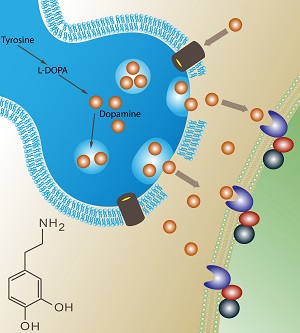28 Oct Chemicals And Cognitive Performance
Outside Influences
 Mind-altering chemicals, stimulants, depressants and hallucinogens to name a few, affect the entire process of cognition, from receiving and processing input, through recognition and reasoning. They often even improve or impair our ability to act, affecting everything from muscle performance to language production and comprehension. Bacteria and viruses can also impact people. Things that come from outside the body affect the body, brain and mind in significant ways. Are there similar external factors that can affect intelligent computers or software? Digital viruses are external and can certainly infect machines, storage devices and software. Are there things, similar to mind-altering chemicals, that can, when intentionally introduced to a system, speed things up, slow things down or induce psychedelic responses such as plasticine porters with looking glass ties? In the age of context, these questions are becoming more important.
Mind-altering chemicals, stimulants, depressants and hallucinogens to name a few, affect the entire process of cognition, from receiving and processing input, through recognition and reasoning. They often even improve or impair our ability to act, affecting everything from muscle performance to language production and comprehension. Bacteria and viruses can also impact people. Things that come from outside the body affect the body, brain and mind in significant ways. Are there similar external factors that can affect intelligent computers or software? Digital viruses are external and can certainly infect machines, storage devices and software. Are there things, similar to mind-altering chemicals, that can, when intentionally introduced to a system, speed things up, slow things down or induce psychedelic responses such as plasticine porters with looking glass ties? In the age of context, these questions are becoming more important.
| Understanding Context Cross-Reference |
|---|
| Click on these Links to other posts and glossary/bibliography references |
|
|
|
| Prior Post | Next Post |
| The Nature of Innovative Thinking | Section 6 Intro to Language and Dialog |
| Definitions | References |
| cognition comprehension | Scoble 2014 |
| reasoning dopamine | Blum 1997 |
| mind interpretation | Smith 2014 |
Of all the mind-altering chemicals in the inventory, caffeine may be the most ubiquitous in today’s society. Images come to my mind of
https://www.linkedin.com/pulse/article/20140908162020-50578967-caffeine-the-silent-killer-of-success
Inside Influences
Serotonin and Dopamine imbalance are associated with anxiety, depression, obsessive behavior, low energy and mental blocks (Smith 2014). The neurotransmitter, dopamine, is also likely to play a role in many emotions and cognitive functions, such as happiness, attention, extroversion, self-confidence, and goal-direction. This understanding, and understanding the pathologies of imbalance, make it appear that the chemical components of electrical flow in the brain run the show. “If serotonin is the Zen-master among neurotransmitter, dopamine is Pollyanna, responsible for the highs of infatuation, new love, joy, self-confidence, and motivation. But like all roller-coaster rides, dopamine highs have their dangers” (Blum in Psychology Today 1997). Dangers like addiction and sudden romantic attachment cannot be ignored.
 Dopamine neurotransmitter has a role in addiction as well as in “triggering the joyously obsessive nature of first love. Rutgers University anthropologist Helen Fisher, Ph.D., suspects that love’s initial all-consuming sizzle is part pure lust, part pure dopamine” (Ibid).
Dopamine neurotransmitter has a role in addiction as well as in “triggering the joyously obsessive nature of first love. Rutgers University anthropologist Helen Fisher, Ph.D., suspects that love’s initial all-consuming sizzle is part pure lust, part pure dopamine” (Ibid).
What part of a neuromorphic machine design could possibly represent the impact of chemicals, and the impacts of slight or significant imbalances thereof? Are there things that could act a corollaries to mind-altering chemicals (machine altering chemicals)? I think there are such things. In my model, I think of the gradually shifting weights of knowledge fragments as representing the balance of chemicals at each synapse in the brain. I think procedures associated with interpretation and reasoning may be compared to intentional introduction of chemical imbalance.
Just as you wouldn’t try to do such an experiment with a person, except in tightly controlled circumstances and with the person’s full knowledge and consent, you wouldn’t do it with a machine without watching the impact carefully. But doing so carefully, however, comparing the impacts of different staged imbalances with the same inputs, could yield really useful observations and opportunities for tuning a machine to adapt to different situations. This question of how and where to implement multi-valued logic has many important implications for the robustness and adaptability of intelligent machines of the future.
| Click below to look in each Understanding Context section |
|---|









